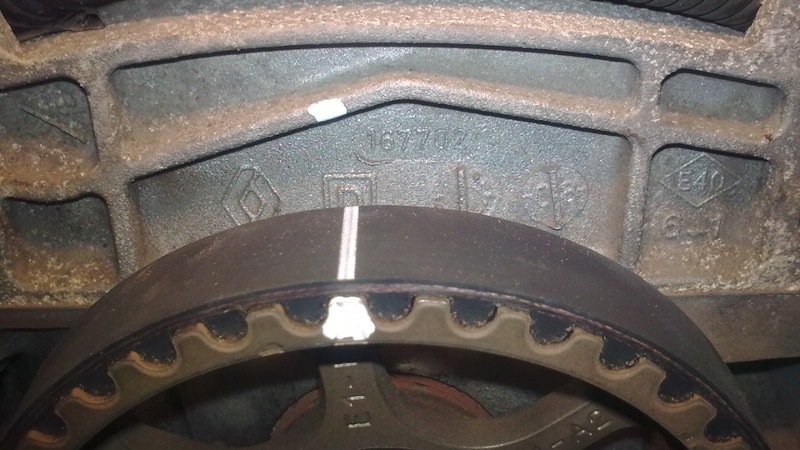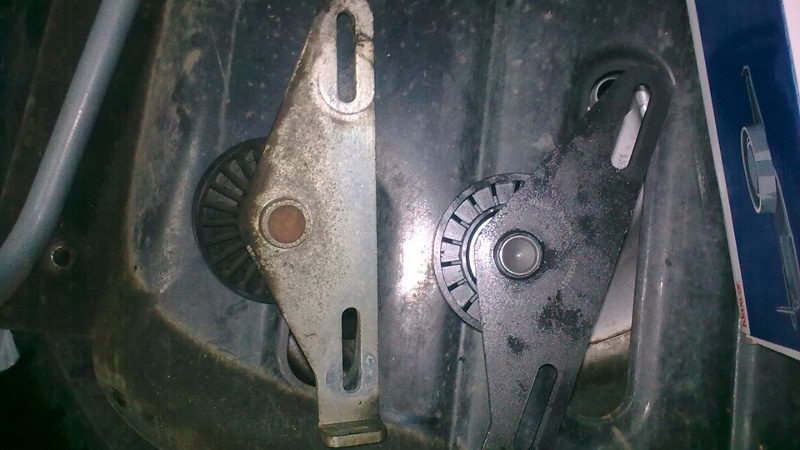The timing belt is necessary to connect the crankshaft and camshaft (8-valve engines use one camshaft, 16-valve engines use two). Often the belt slips, which affects the operation of the entire engine - the intake and exhaust strokes do not occur synchronously. Because of this, fuel consumption increases, power decreases, and the temperature of the coolant rises. Therefore, it is necessary to timely replace the belt and monitor its condition.
The most dangerous is a broken belt. It can happen at any moment. The reasons for this are very different - wear of the pulleys, improperly installed shafts, poor quality of the material from which the belt is made. It should be noted right away that most engines do not tolerate a broken timing belt - the valves bend. As a result, the engine will need to be repaired.
It is better to purchase a belt from a trusted manufacturer
Quality is the main criterion. Try to buy only original spare parts in stores, do not use multi-brand ones that can be offered in car dealerships. Usually, such components are of dubious quality and may simply not work out the declared resource. Automakers are trying to improve the quality of the elements on their cars. And trusting such a node as a timing belt to an unknown manufacturer is extremely dangerous - troubles can be expected immediately after installation. It is better to overpay a little for the original belt and pulley than to do expensive engine repairs.
As for the timing, on average, the timing belt is replaced once every 60 thousand km. run. This is the case for most manufacturers. But there are some cars on which the service life reaches 90 thousand. And most importantly - if the car is older than five years, it is better not to delay the replacement: it is recommended every 60 thousand - change it every 50,000 km.
How to properly replace the belt
To reduce the cost of replacing the timing belt, you can do it yourself. Everyone can do this, on many machines this procedure is similar. For clarity, let's look at the replacement procedure on a Renault Logan car with a 1.6-liter 8-valve engine. Inspection of the timing belt on it must be carried out every 15 thousand km and, if necessary, tighten it. The owners of these machines are aware that belts can hardly go 50 thousand. Based on this, we can conclude that it is necessary to carry out repairs in advance, that is, the frequency of replacing the timing belt on Logan is 40-45 thousand mileage. Let's consider in detail the order of work:
- Loosen the bolts on the right front wheel, raise the car on a jack (do not forget to put stops under the rear wheels). After completely unscrew the bolts and remove the wheel.
- When you have access to the crankshaft pulley bolt, you can begin to unscrew it. You will need a partner, he needs to be put in the driver's seat so that he squeezes the brake pedal with fifth gear on.
- Twist the bolt with an 18 wrench. If it doesn't work, use a lever.
- Place a jack under the engine. Be careful, when lifting, you need to install a wooden board between the jack and the pallet. The pallet is made of duralumin, so it is easy to damage it with a jack.
- Remove the five bolts and remove the support from the engine.
- Remove the belt that drives additional equipment - power steering, air conditioning compressor and generator.
- To complete the previous paragraph: using a 13 key, unscrew the bolt on the tension roller and loosen the belt.
- With keys 13 and 10, remove the top cover of the gas distribution mechanism.
- Using an 8 wrench, unscrew the bolts that secure the bottom cover.
- After removing the covers, clean them of dirt and dust by wiping with a rag.
Easy way to replace
While the timing belt itself has not yet been touched, set the mark on the camshaft vertically upwards. There is also a mark on the surface of the belt, but we ignore it - it shifts by 2 teeth with each turn. You can, of course, before replacing the timing belt, turn the crankshaft for a long and tedious time, but there is no point in this. Therefore, set only the camshaft mark so that it looks up. If the marks on the belt and camshaft match, the marks on the crankshaft pulley and the belt will also match. If the old marks on the belt are erased, use a marker to apply new risks to its surface (and you need to remember exactly the one that should match the mark on the camshaft pulley).

Camshaft label
To remove, now you need to loosen the nut that tightens the tension roller. And unscrew the nut completely, since the roller must also be changed. We apply a new belt to the old one - all the marks match. Installing a new belt is extremely simple - install it on the pulleys so that the marks on the belt are aligned with the corresponding marks on the camshaft and crankshaft. Install a new roller in advance, which at the very end must be rotated around an eccentric axis to tension the belt. For this purpose, you can use a tensioner, which is used for VAZ cars, since the holes in the roller are located the same way. After completion, install all previously removed elements.
"Dealer" method
First you need to combine two marks - on the camshaft and on the cylinder head (without removing the belt). In this position of the camshaft, the piston of the first cylinder is at top dead center. Now unscrew the cap on the block.
Install a special device in it - a bolt with a thread length of 75 millimeters and a diameter of 10 mm. With it, you fix the crankshaft, it will not turn. Now remove the old belt with a roller, and then install a new one. The method is good because you do not accidentally turn the shafts (or, more precisely, the crankshaft). It's no secret that when putting on a belt, you can shift its position by a quarter of a turn, or even more. But for some, these are superfluous and absolutely unnecessary operations.
Afterword

Together with the timing belt, the tension rollers are also usually changed.
A little has already been said about the choice of belts, but a few more points are worth noting:
- Original consumables always have a higher resource than non-original ones.
- The original belts and rollers are made of high quality material and are tested.
When buying, pay attention to the condition of the rubber - it should not have cracks. To do this, bend the belt in different directions. If even the slightest cracks are visible, refuse to buy, ask to be replaced with a high-quality copy. Stores can get spare parts that were stored in extreme conditions - they experienced both overheating and hypothermia. And this affects the state of the material. And when you go to the store, find out the exact marking of your belt (or take it with you if it is already removed). The slightest deviation in size makes it impossible to install it on a car. Also, make sure that the cord does not come out of the belt in any place.







